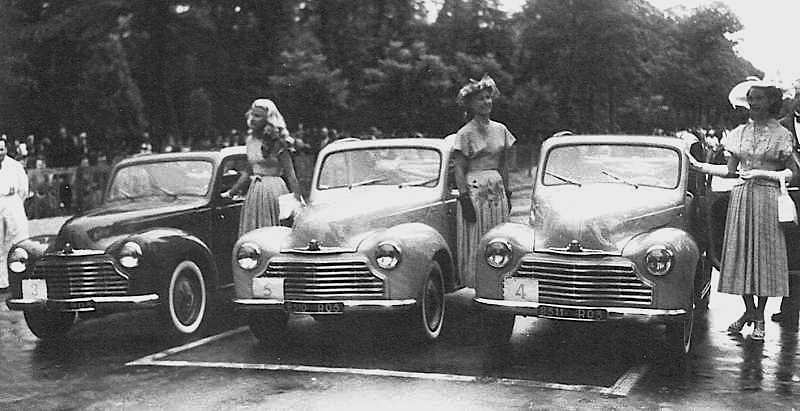The Pontiac Bonneville line for model years 1959-1960 was among the last of the cars styled while he was in charge. A Bonneville certainly looked long and low, because in fact it was those things. Perhaps the longest and lowest-appearing model was the convertible.
This thought was driven home on my most recent visit to America's Car Museum in Tacoma, Washington. Below are a few photos I took of a 1960 Pontiac Bonneville convertible on display there.
Front view. All the major character line folds and chrome accents are horizontal. Compare to the more rounded 1950 Studebaker in the background.
Absent is a flowing fender line. Instead I count at least five major horizontal design elements on the side seen here. From top to bottom they are: (1) the top of the car body, (2) the character line along the shoulder that takes a short break on the aft side of the door, (3) the bulge immediately below that which is accented by (4) the long chrome strip, and (5) the bottom edge of the body. The character line flowing aft of the rear wheel opening could be considered a sixth element.
The wide-angle lens setting I used might be exaggerating the appearance of the trunk and rear overhang. (But not much: compare to the previous photo.) In any case, seeing the car in person, I was so struck by the size of the overhang that I made sure to photograph it. The horizontal styling theme served to emphasize this.
A large trunk is not necessarily a bad thing. That's because it can hold plenty of luggage when long trips are taken. Consider this an instance where an aspect of functionality (the Holy Grail of purist design) interferes with aesthetics: the long rear end unbalances the overall design.
Long as 1959-60 Pontiac Bonnevilles were, they were not the longest Pontiacs ever. The length prize goes to some early 1970s models. But that's a tale for another time.



































